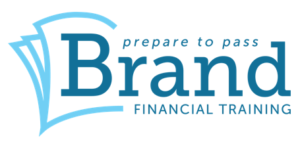In their regular exam-focussed article for Professional Paraplanner, the Brand Financial Training team look at fixed income securities and their differing characteristics.
A fixed-interest security (a bond for short) provides a fixed income over a given period and then repays the original capital at the redemption date.
A gilt is a bond issued by the Treasury and corporate bonds are issued by companies. Both are traded on the stock market so their values can fall as well as rise.
Analysing the different characteristics of bonds is important for anyone considering an investment in this asset class, but equally important for those studying any of the investment focused CII exams.
There are always questions on bonds in R02 and J10 and they can also feature in the AF4 written paper. For example, in the October 2023 exam, question 3 was based entirely on gilts and surrounding economic factors.
In this article, we look at a key calculation taken from that exam which is relevant to all three investment exams mentioned; the redemption yield.
This information was given as part of question 3 in the October 2023 AF4 exam:
Gilt X has a purchase price of £147.28 and a current clean price of £116.32. There are 14 years to redemption and the half-yearly coupon is £1.85.
To work out the redemption yield we firstly have to consider the running yield. We are not specifically given this in the case study so we have to use the information we are given to work it through.
We know the half-yearly coupon is £1.85 and this is paid twice a year so this equals £3.70. As this is based on the nominal value of £100, then the coupon is 3.70%. To find the running yield we divide 3.7 by the clean price (not the current purchase price) and multiply it by 100 to find the percentage:
(3.7/116.32) x 100 = 3.1808803%
Next we consider the sum which will be returned at redemption, which is always the nominal value of £100 (not the amount that was paid for the investment).
As the current price is £116.32, at redemption there will be a loss of -£16.32.
Next we divide – £16.32 by the number of years to redemption:
-16.32/14 = -1.1657142
Then we divide this figure by the clean price:
(-1.1657142/116.32) x 100 = -1.0021614%
Finally we can deduct this from the running yield:
(3.1808803% – 1.0021614%) = 2.1787189% rounded to two decimal places = a redemption yield of 2.18%
Anyone sitting a CII investment exam should practice this calculation as much as possible, particularly those sitting R02 and J10 where it is very likely to appear in every exam.
One of the risks of holding bonds as an investment is that interest rate changes can have a significant impact on their value.
There’s an inverse relationship with bond prices and interest rates; as interest rates fall, bond prices go up and when interest rates go up bond prices fall.
The concept of duration allows us to gauge how much a bond’s price is likely to rise or fall when these changes happen.
Duration measures how long it takes in years for the price of the bond to be repaid by its cash flows. Let’s say this has been calculated as 3.41 years. We can use this figure and the redemption yield to then calculate its modified duration.
Using the redemption yield from the above example of 2.18% – we calculate modified duration as:
Duration of 3.41 divided by (1 + the redemption yield of 0.0218) = 3.3372479
We now know this bond has a modified duration of 3.34 (rounded) and so can be expected to undergo a 3.34% movement in price for each 1% movement in interest rates.
Where the bond above had a current price of £147.28, if interest rates rise by 1% then we can expect the bond price to fall to:
£147.28 – (£147.28 x 0.0334) = £142.36
The longer the modified duration is (in years) the more sensitive a bond is to changes in its yield.
Understanding these particular features of bonds will really help anyone studying for a CII investment exam.
About Brand Financial Training
Brand Financial Training provides a variety of immediately accessible free and paid learning resources to help candidates pass their CII exams. Their resource range ensures there is something that suits every style of learning including mock papers, calculation workbooks, videos, audio masterclasses, study notes and more. Visit Brand Financial Training at https://brandft.co.uk





























